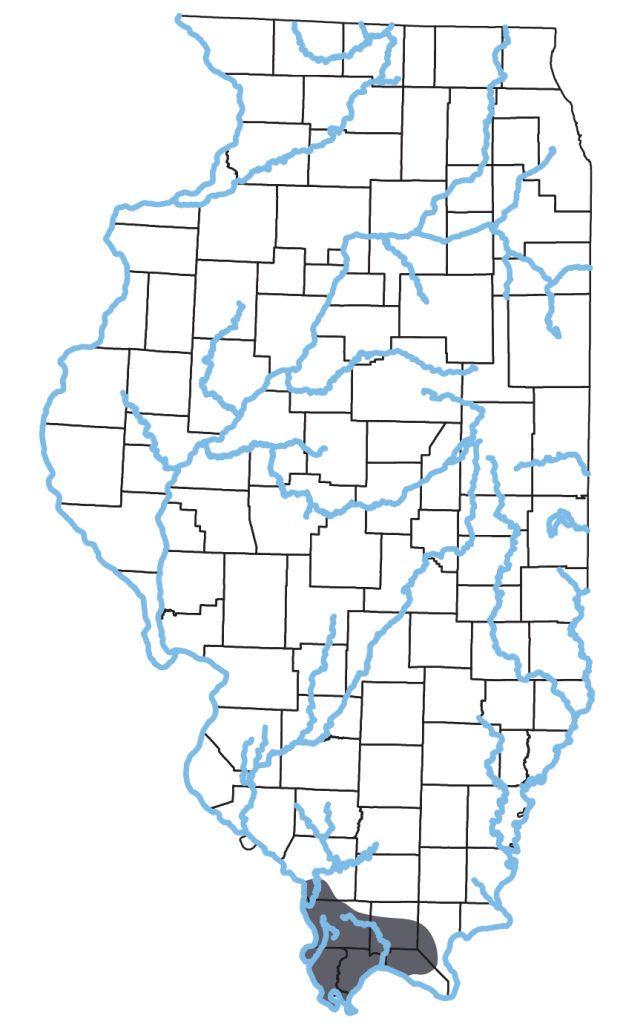Hyla avivoca (Viosca, 1928)


Key Characters: Smooth skin; large toe pads; light spot under each eye; green to yellowish-green patches on groin and inner thigh.
Similar Species: Gray treefrogs have orange to yellowish-orange patches on groin and inner thigh. See Key to Frogs & Toads of Illinois for help with identification.
Subspecies: None recognized.
Description: Small (up to 3.5 cm SVL) gray-brown or greenish treefrog with dark “X” or star-shaped mark in middle of back. Belly pale; throat pouch dark in male. Arms and legs with dark bars. Eyes relatively large. Pustule underneath joint of outer finger of hand usually divided. Male smaller than female.
Habitat: Bald cypress-tupelo swamps and nearby wet hardwood forests.
Natural History: This small frog can change color from dark gray to light green depending on temperature, moisture, and background. Adult diet includes small arboreal insects and spiders. Breeds mid-May to August. Male calls from tree (often quite high up), vine, or large shrub over water, the sound a rapid succession of short birdlike whistles. Eggs are laid in submerged packets that hatch in a few days into colorful tadpoles (dark brown with 3-7 red saddles and thin bronze head stripes) that transform in about a month.
Status: Threatened in Illinois. Threats include clearing and draining of bald cypress-tupelo swamps. Known only from extreme southern counties, where it is locally common in some good habitats.
Etymology: Hyla – (Greek) in honor of Hylas, a companion of Hercules; avivoca – avis (Latin) meaning bird; voco (Latin) meaning call.
Original Description: Viosca, P. 1928. A new species of Hyla from Louisiana. Proceedings of the Biological Society of Washington. 41:89-92.
Type Specimen: Holotype, USNM 75017; collected by Perry Viosca, Jr., 12 June 1926.
Type Locality: outskirts of Mandeviille, Louisiana
Original Name: Hylaavivoca
Nomenclatural History: Viosca collected specimens of this species in 1917 but concluded that they were assignable to Cope’s Hyla versicolor phaeocrypta because K.P Schmidt advised him that C.M. Barber collected similar bird-voiced frogs in 1907 at Horseshoe Lake, Alexander County, Illinois which he considered Hyla versicolor. Viosca examined the H. v. phaeocrypta type in 1928 and concluded that it was a juvenile H. versicolor, and he described Hyla avivoca. Mittleman (1954. The status of Hyla phaeocrypta with notes on its variation. Copeia 1945(1):31-37) employed biometric analysis and convinced many that the Hyla phaeocrypta type was not a versicolor and therefore was the senior synonym for H. avivoca. Thus, H. phaeocrypta was generally accepted as the proper name until 1953 when Smith (Smith, P. W. 1953. A reconsideration of the status of Hyla phaeocrypta. Herpetologica 9: 169–173) reviewed the evidence, questioned Mittleman’s methods, and concluded that the phaeocrypta type was a versicolor and resurrected Viosca’s name.


